Rehabilitating the Foundered Horse: Case Study
Follow Tess, a 16-year-old mare, step-by-step as she rehabs from a bought of PPID-related laminitis.
Share
ADVERTISEMENT
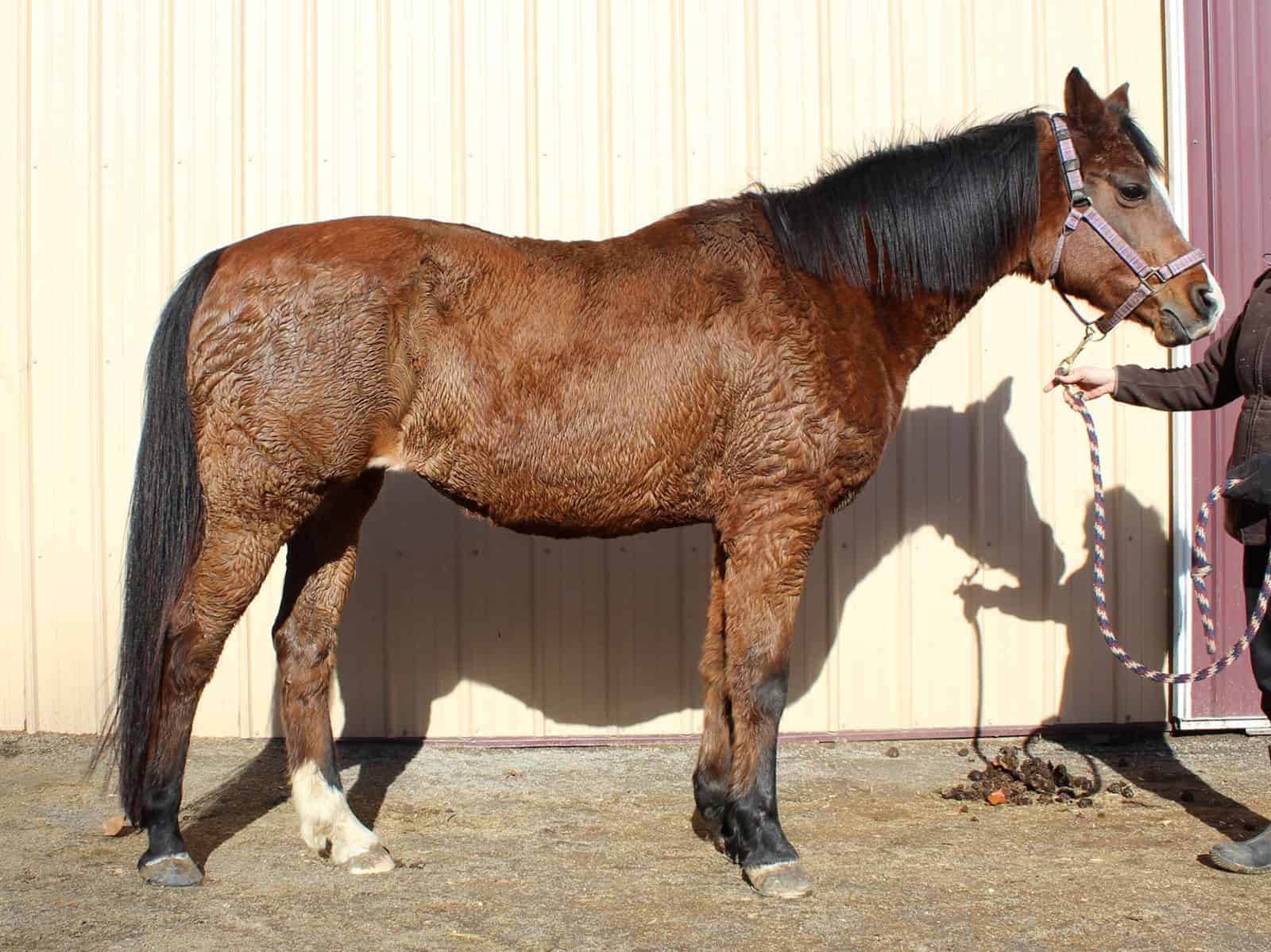
Rehabilitating the Foundered Horse: Case Study
Tess, a 16-year-old Arabian mare diagnosed with pituitary pars intermedia dysfunction (PPID), came to Daisy Bicking's Daisy Haven Farm in Pennsylvania for rehabilitation from endocrine-related laminitis. | Photo: Courtesy Daisy Bicking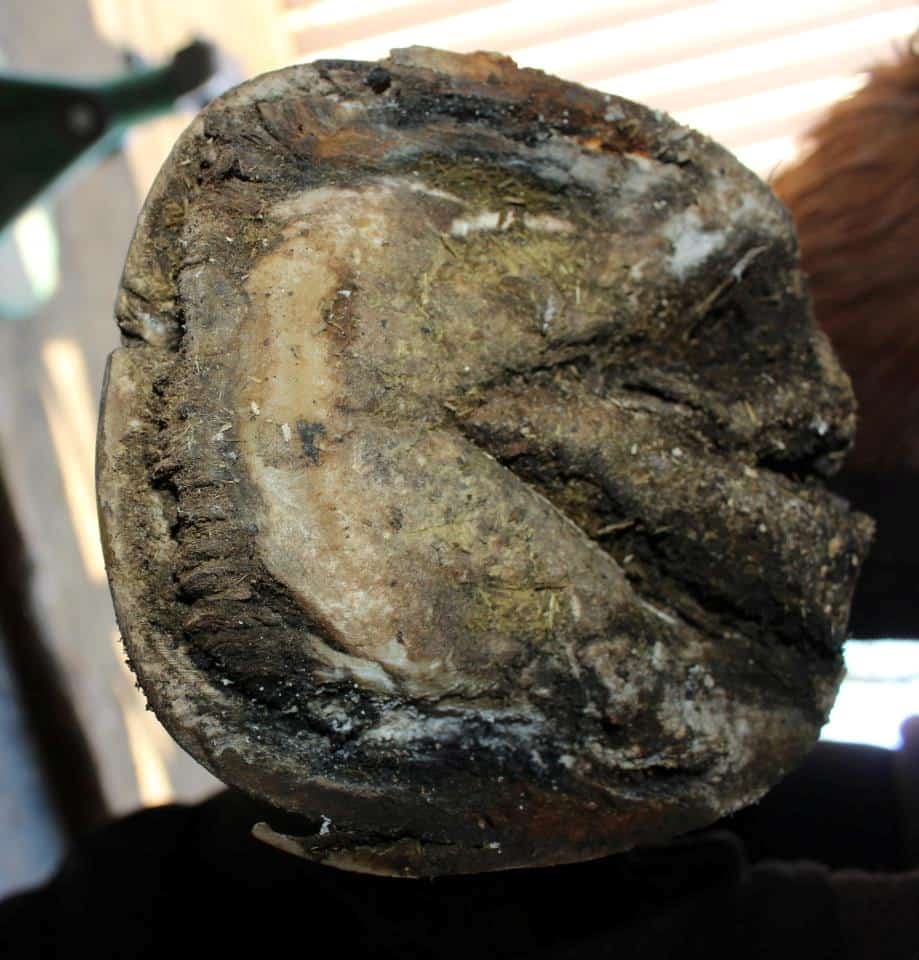
Dropped Sole, Before Rehab
Here you see the sole of her right front foot, showing a dropped sole, hoof wall separation, stretched white line, and the ground surface of the laminar wedge. | Photo: Courtesy Daisy Bicking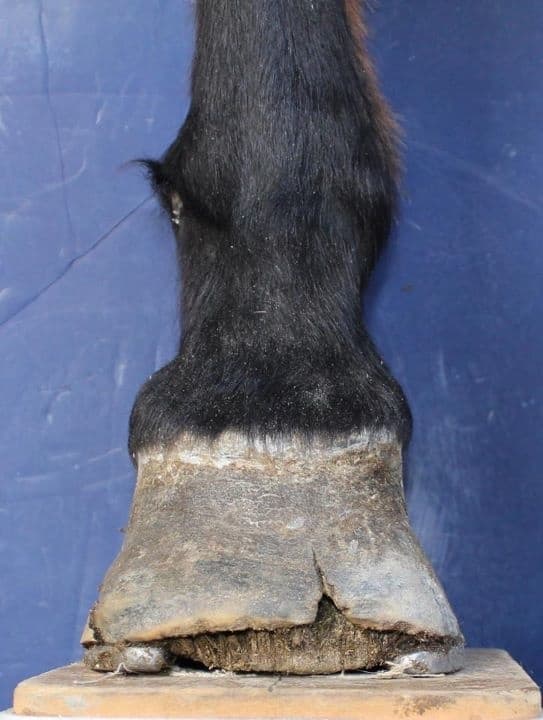
Right Front, Dropped Sole
Here you see the front of her right front foot, showing a dropped sole, hoof wall separation, stretched white line, and the ground surface of the laminar wedge. | Photo: Courtesy Daisy Bicking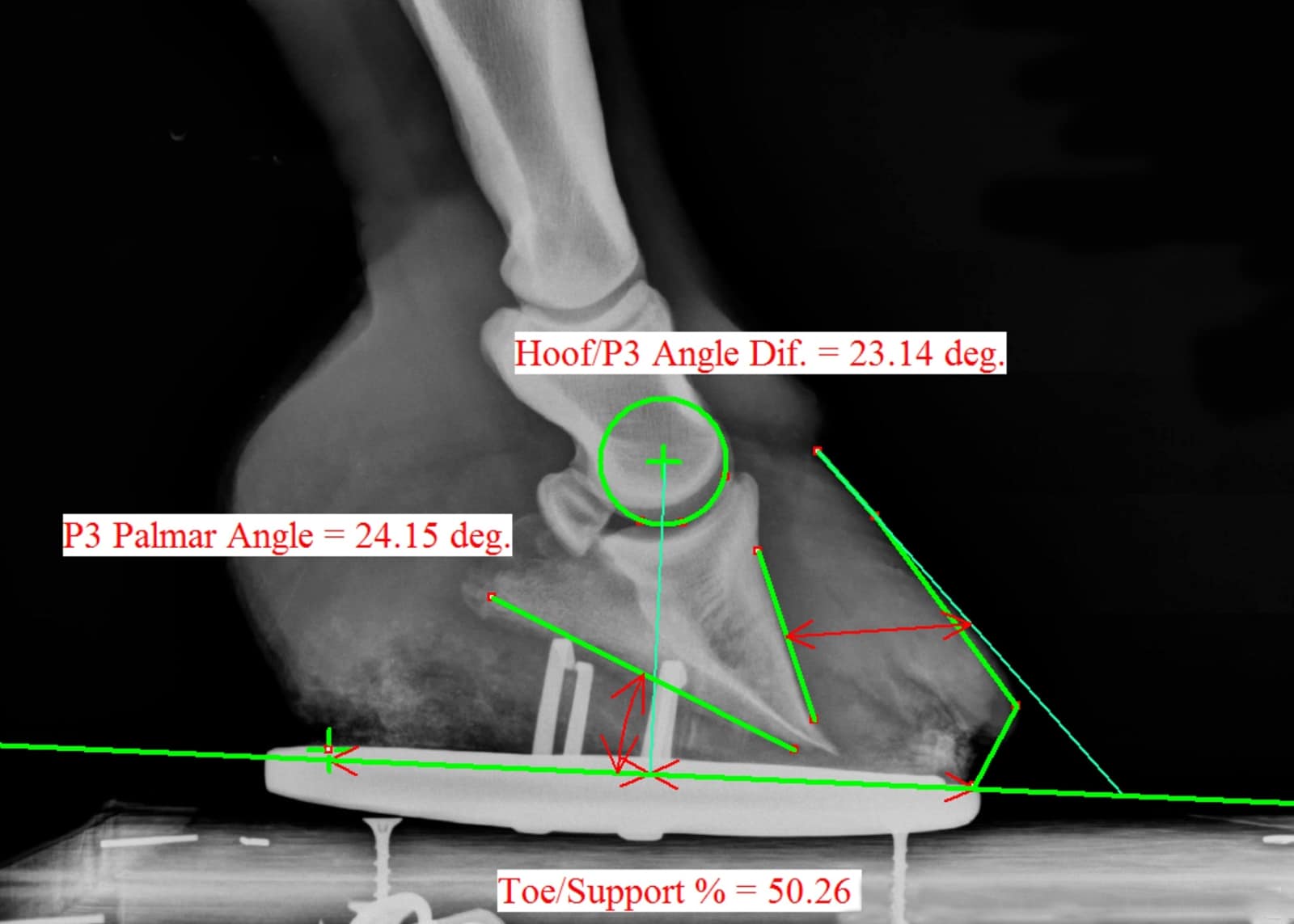
Radiograph: Rotation of the Coffin Bone
Here, in this radiograph of the right front foot taken upon her arrival in December 2011, you can see the rotation of the coffin bone and development of a laminar wedge. | Photo: Courtesy Daisy Bicking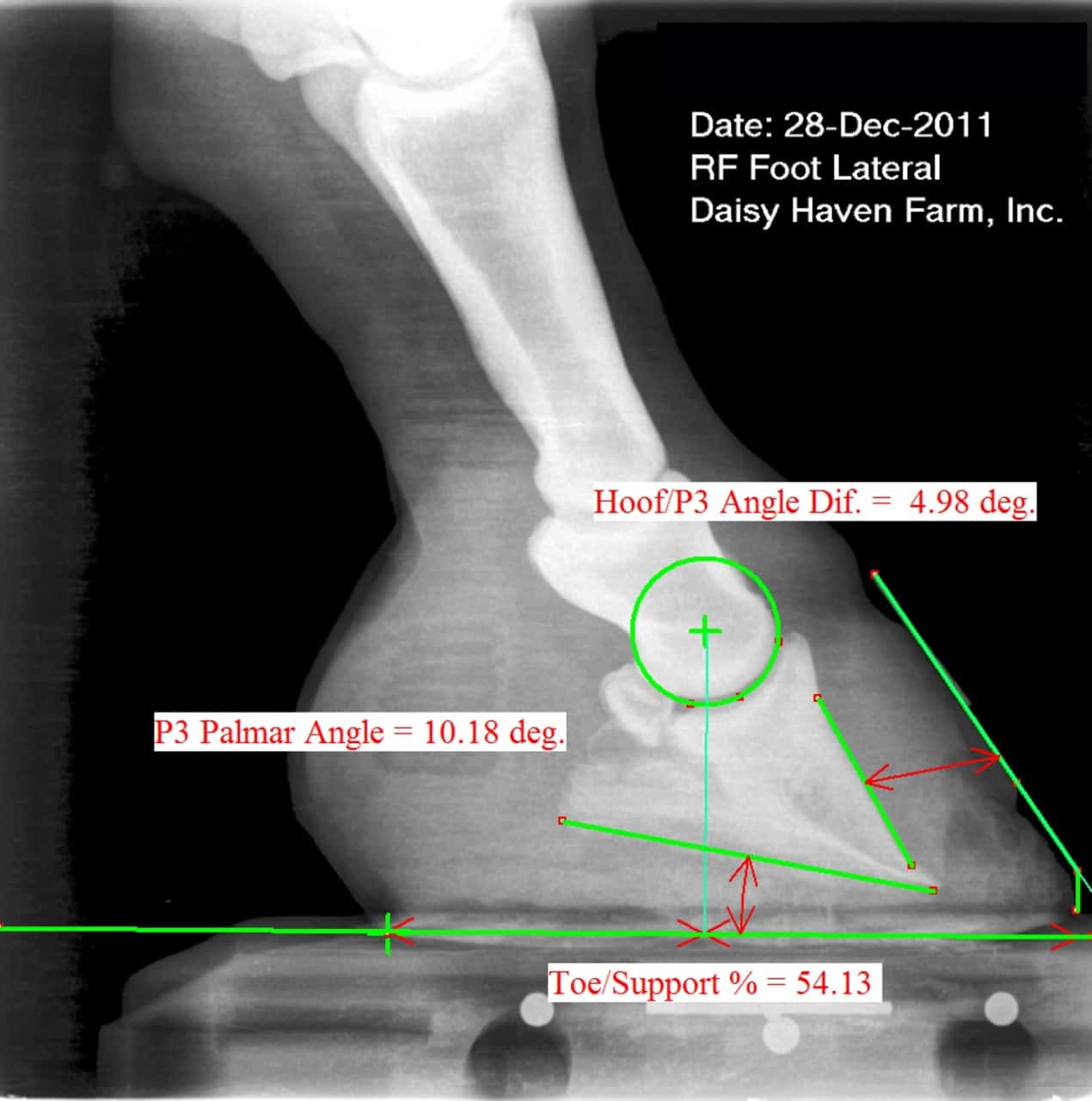
12 Days after Corrective Trimming
A radiograph of the same foot 12 days later, after her right front foot had been trimmed to correct rotation. | Photo: Courtesy Daisy Bicking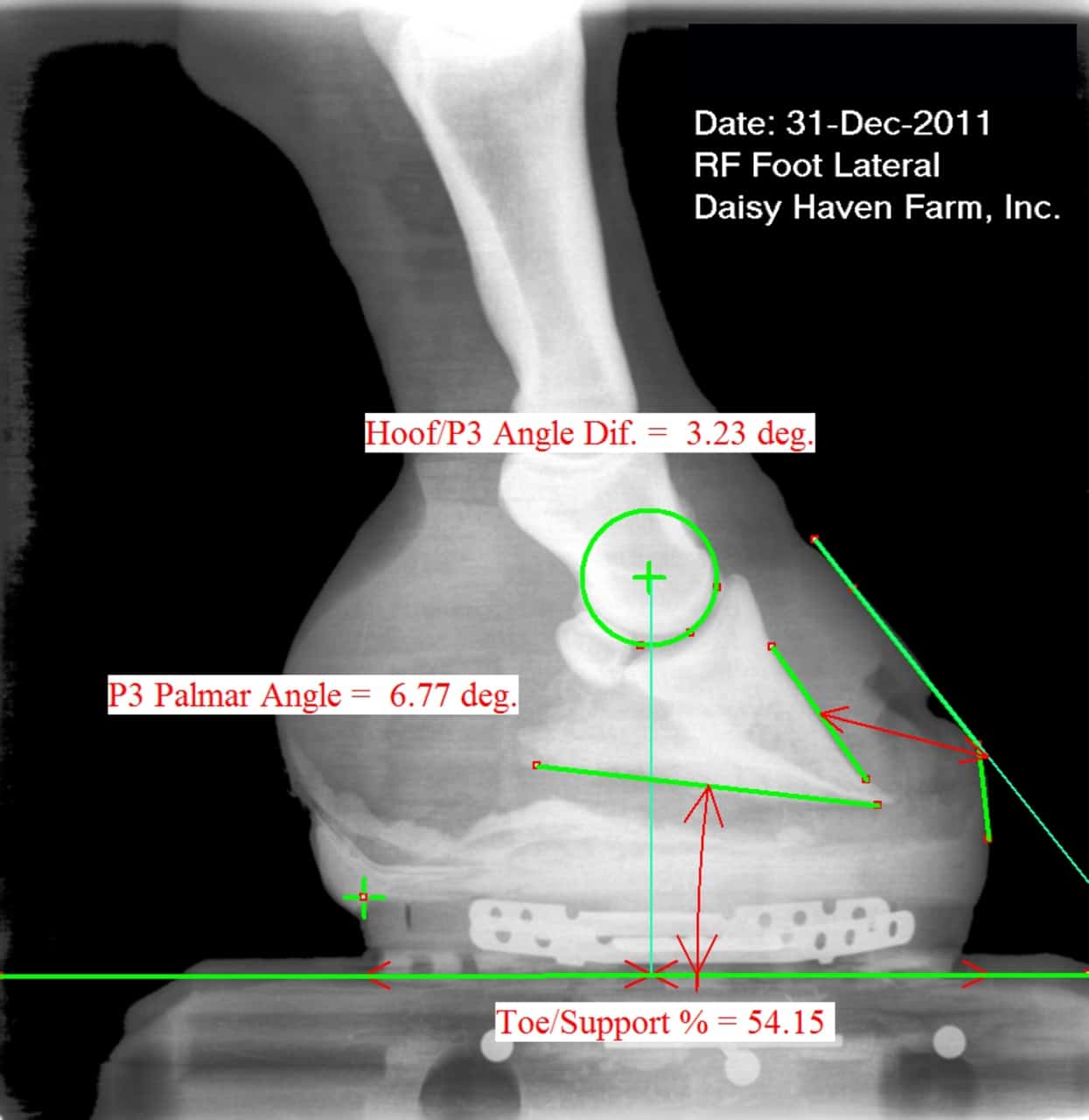
Glue-on Composite Shoe
And again three days later, after having a glue-on composite shoe applied. Her foot was packed under the shoe with dental impression material, and hoof casting was applied over the shoe package. | Photo: Courtesy Daisy Bicking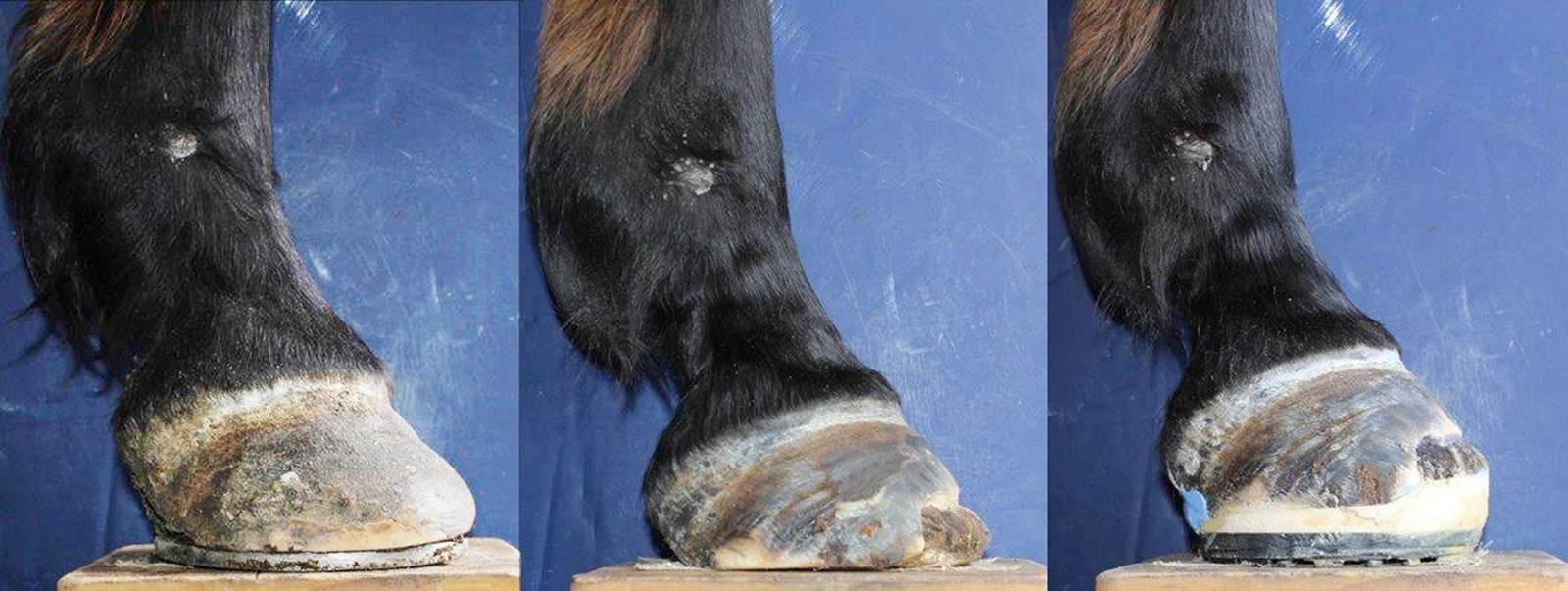
Progression
See the progression over the course of her first trimming and shoeing. | Photo: Courtesy Daisy Bicking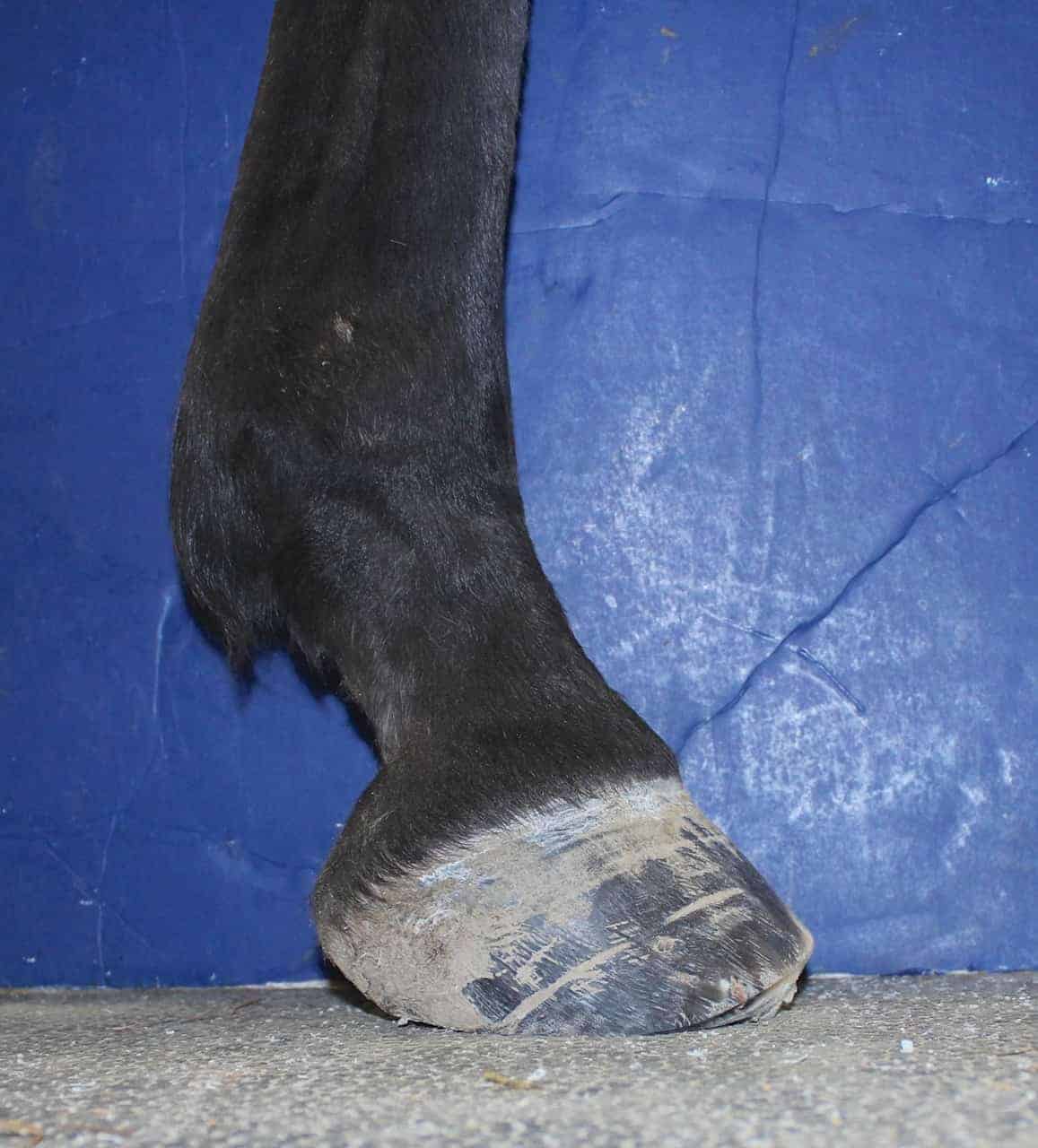
New Hoof Growth
By April 2012 the mare’s recovery had progressed to the point that the new hoof growth was coming in tight, with no additional laminitis rings, her white line was much tighter at the ground and waxy in appearance, and her hoof/pastern axis is now in alignment. | Photo: Courtesy Daisy Bicking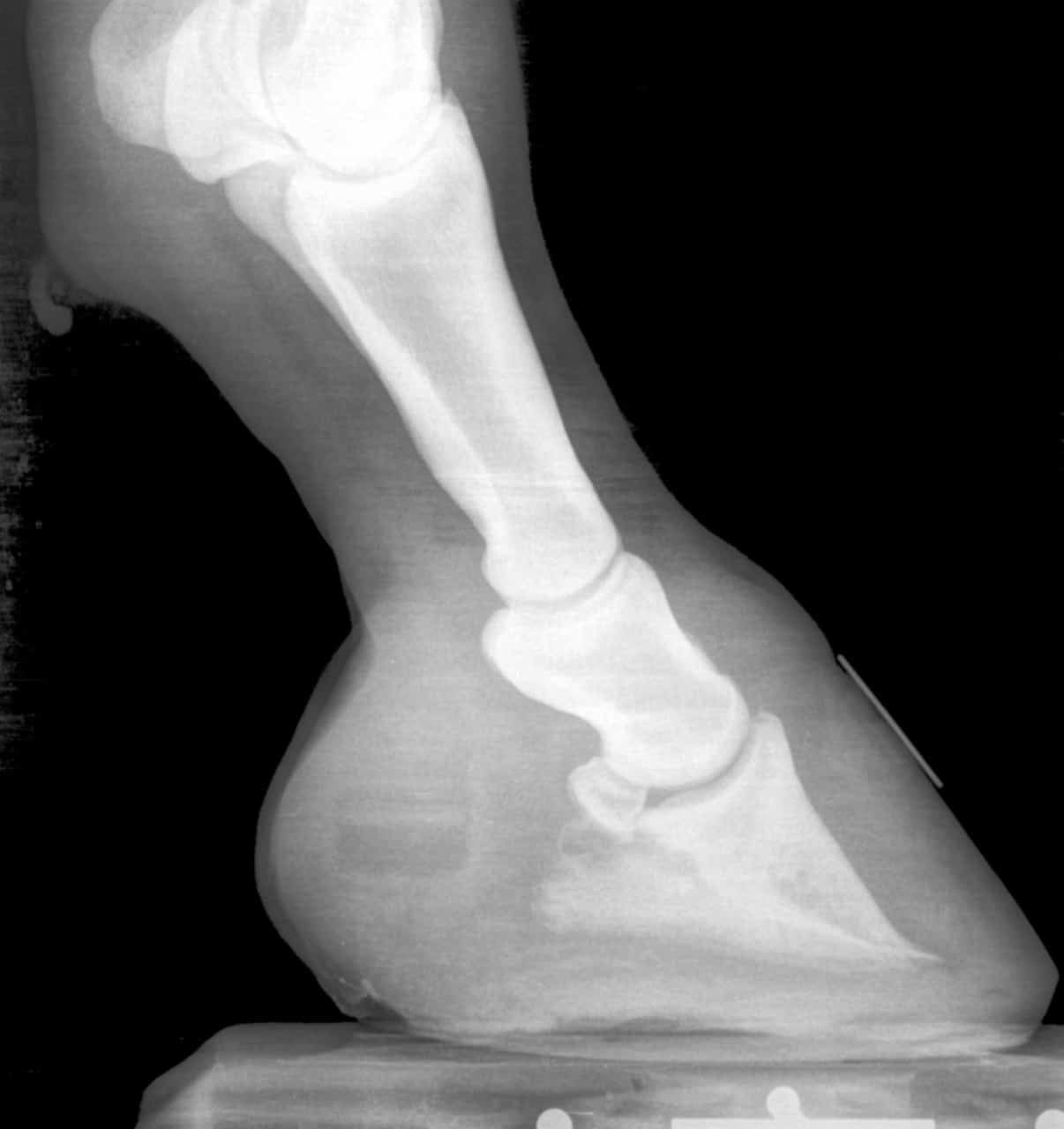
After Rehab: Radiograph
By April 2012 the mare’s recovery had progressed to the point that the new hoof growth was coming in tight, with no additional laminitis rings, her white line was much tighter at the ground and waxy in appearance, and her hoof/pastern axis is now in alignment. | Photo: Courtesy Daisy Bicking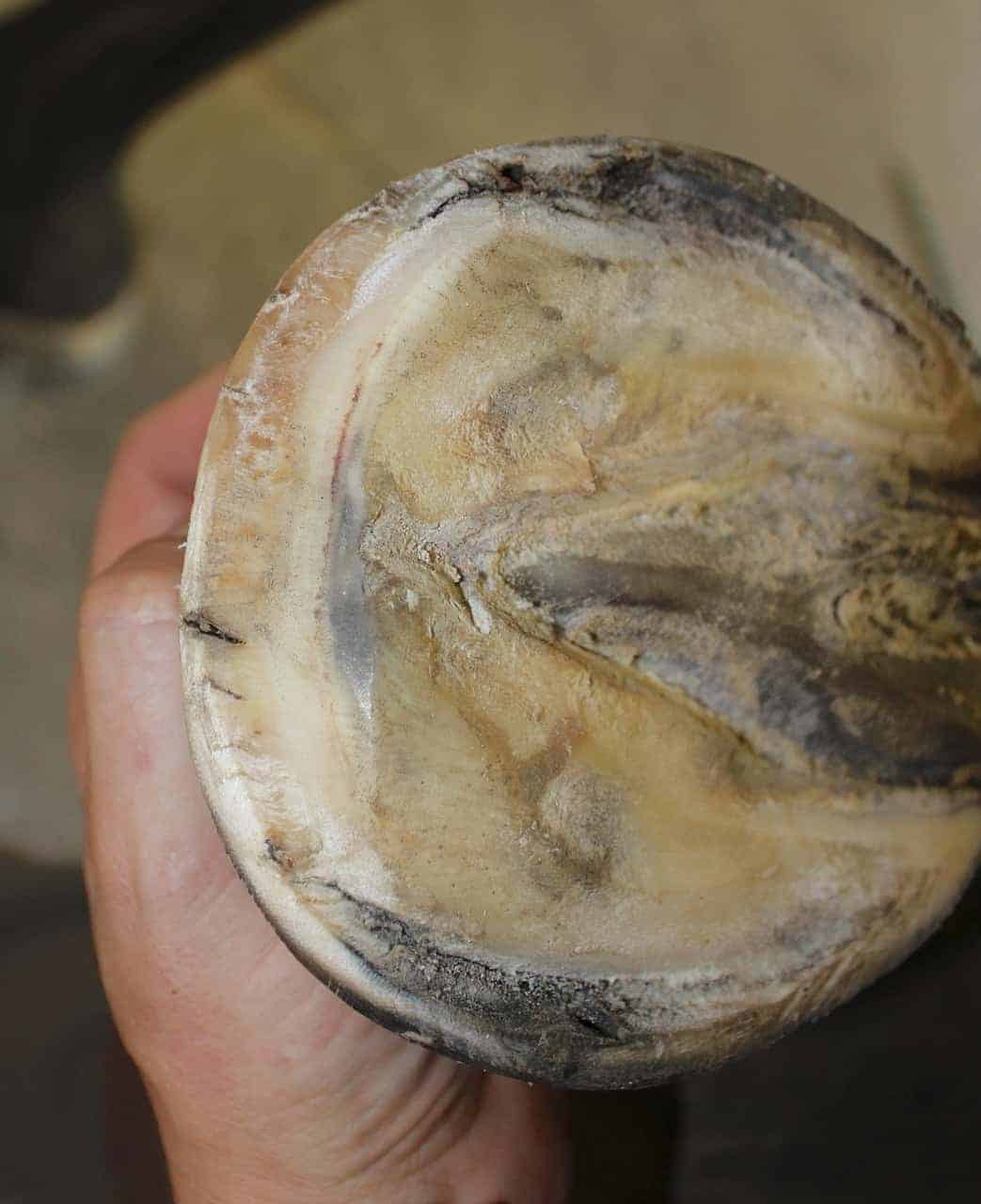
After Rehab: Sole
By April 2012 the mare’s recovery had progressed to the point that the new hoof growth was coming in tight, with no additional laminitis rings, her white line was much tighter at the ground and waxy in appearance, and her hoof/pastern axis is now in alignment. | Photo: Courtesy Daisy Bicking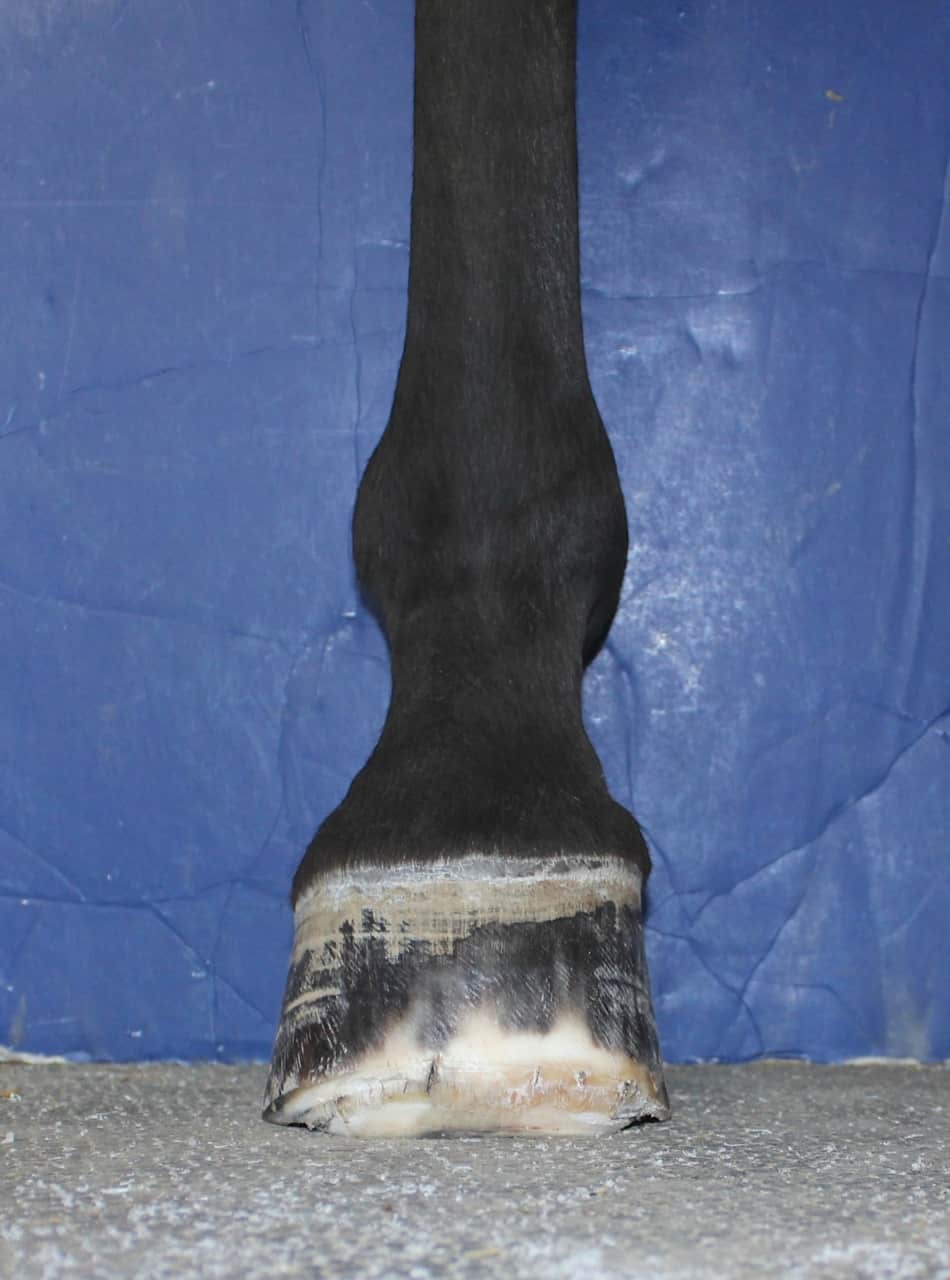
After Rehab: Front view
By April 2012 the mare’s recovery had progressed to the point that the new hoof growth was coming in tight, with no additional laminitis rings, her white line was much tighter at the ground and waxy in appearance, and her hoof/pastern axis is now in alignment. | Photo: Courtesy Daisy Bicking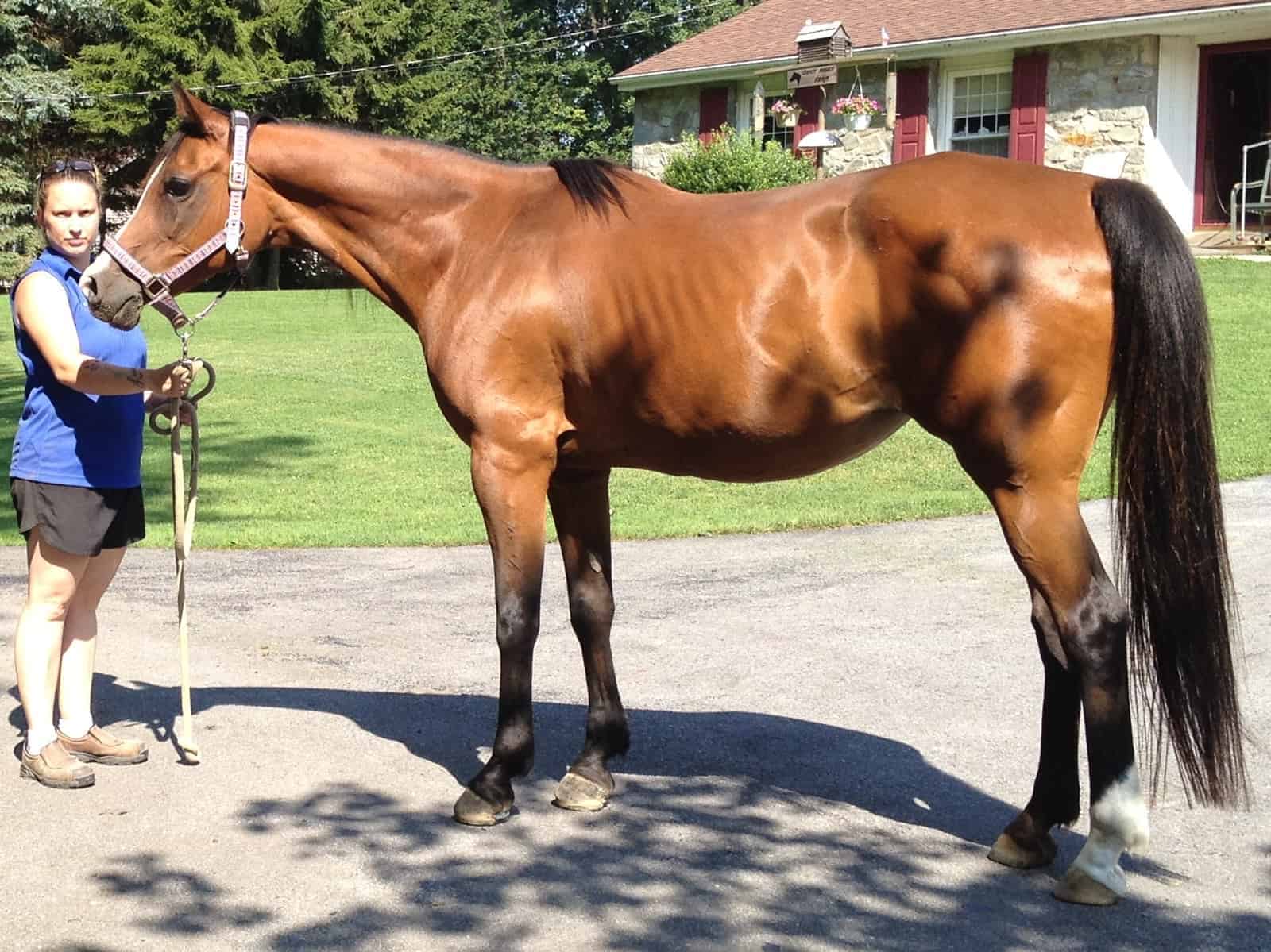
End Result
After six months of rehabilitation consuming a low-carbohydrate diet, living on a drylot, and receiving appropriate veterinary diagnosis and corrective hoof care, this Arabian mare left Daisy Haven Farm in much better body condition, sound, and ready to go back to work. | Photo: Courtesy Daisy Bicking
Rehabilitating the Foundered Horse: Case Study
Here you see the sole of her right front foot, showing a dropped sole, hoof wall separation, stretched white line, and the ground surface of the laminar wedge.
Share

The Horse: Your Guide To Equine Health Care is an equine publication providing the latest news and information on the health, care, welfare, and management of all equids.
Related Articles
Stay on top of the most recent Horse Health news with
















